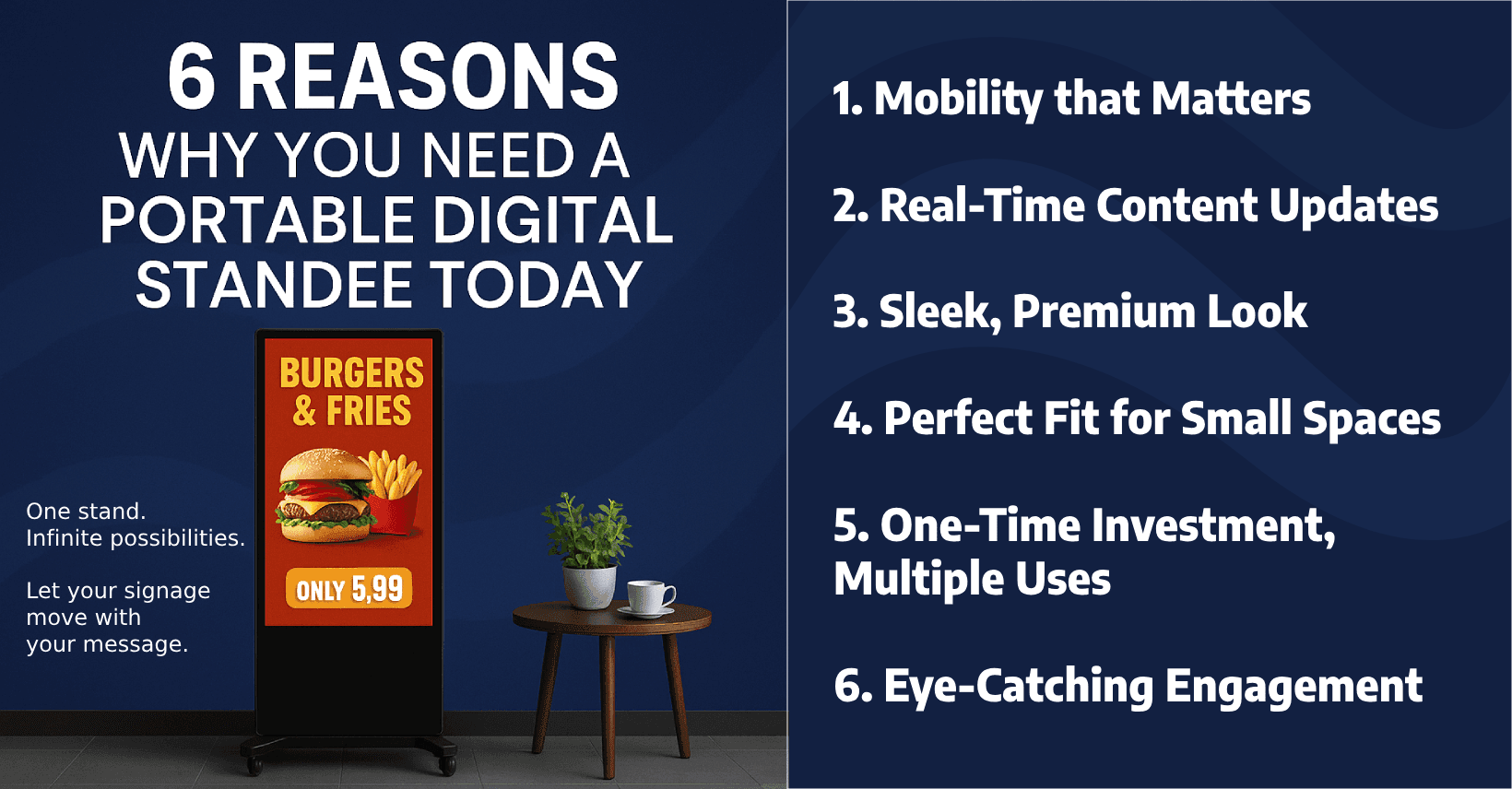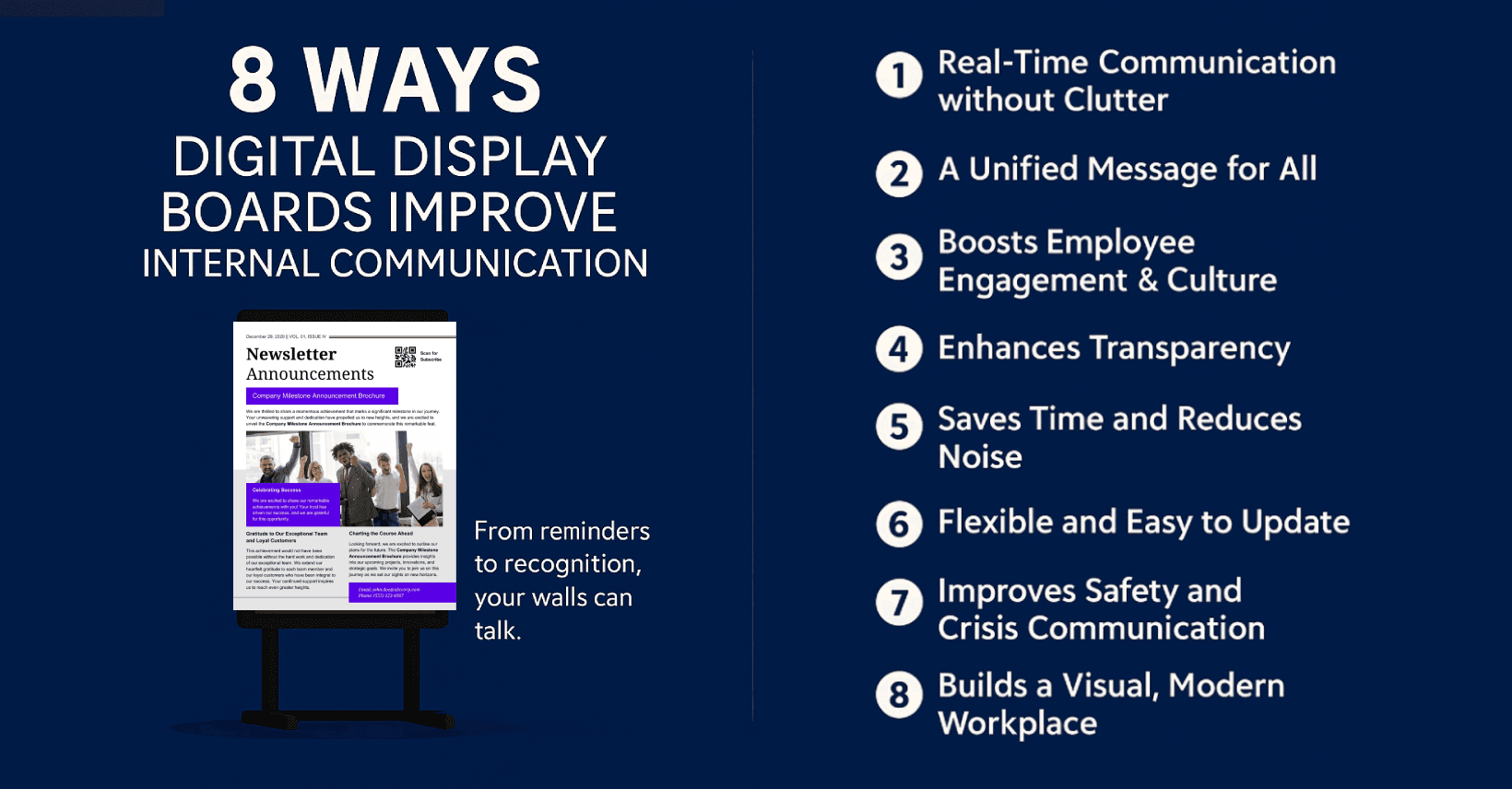
Unveiling the Impact: Measuring and Analyzing the Returns of Digital Signage Advertising
In today's fast-paced and digitally-driven world, businesses are constantly seeking innovative ways to enhance their visibility and engage potential customers effectively. One such method that has gained immense popularity is digital signage advertising. It is a dynamic and versatile tool used across various settings, including retail stores, restaurants, corporate offices, airports, and schools, to communicate messages, promote products, and enhance brand awareness.
However, understanding how to measure the return on investment (ROI) or return on objectives (ROO) of your digital signage advertising campaign is crucial. In this article, we dive into the intricacies of measuring the performance of digital signage advertising and explore practical strategies for effective assessment.
The Necessity of Measuring Digital Signage ROI or ROO
Before we delve into the specifics of measurement, it's essential to comprehend why measuring the performance of digital signage advertising matters. Here are some compelling reasons: Effectiveness Assessment: Businesses need to determine whether their digital signage advertising is achieving its intended goals. Are customers engaging with the content? Are sales or conversions increasing? Analytics provide concrete answers to these critical questions, allowing businesses to assess the effectiveness of their campaigns.
Content Optimization: Not all content is equally engaging. Through performance data analysis, businesses can identify which messages, images, or videos resonate most with their audience. This insight enables them to fine-tune their content strategy, ensuring that only the most compelling visuals are displayed.
ROI Calculation: Digital signage advertising represents a significant investment, encompassing costs for hardware, software, content creation, and maintenance. Measuring performance is crucial for calculating ROI accurately. Businesses can determine whether their investment is generating the expected returns or if adjustments are needed.
Customer Insights: Analytics can reveal valuable customer insights.
Businesses can gain a better understanding of customer behavior, preferences, and demographics by analyzing data such as dwell time, interaction patterns, and the type of content that attracts the most attention. Adaptation to Trends: The business landscape is ever-evolving. New trends, seasons, and promotions require flexibility in content and strategy. Analytics provide the data needed to adapt quickly to market shifts and customer demands.
Key Metrics for Measuring Digital Signage Advertising Performance
Now that we've established the importance of measurement, let's delve into the key metrics that businesses should focus on:
Viewer Engagement: Understanding how many people interact with the digital signage content is fundamental. Metrics such as the number of views, clicks, and interactions provide insights into viewer engagement.
Dwell Time: Dwell time refers to the amount of time a viewer spends interacting with the signage. Longer dwell times often indicate a high level of engagement and interest. Content Popularity: Businesses should track which content pieces perform the best. This includes analyzing the popularity of specific promotions, product showcases, or advertisements.
Conversion Rates: Measuring conversion rates can determine the percentage of viewers who take a desired action after interacting with the digital signage. This action could be making a purchase, signing up for a newsletter, or following a link. Tools for Digital Signage Advertising Analytics
To gather and analyze performance data effectively, businesses can utilize a variety of tools and technologies:
Content Management Systems (CMS): Many CMS platforms offer built-in analytics features, allowing businesses to track key metrics directly within the system. Third-Party Analytics Software: Integrating third-party analytics software provides advanced tracking and reporting capabilities. These tools offer in-depth insights into viewer behavior and content performance.
Sensors and Cameras: Advanced digital signage setups incorporate sensors and cameras that capture data on customer presence and behavior in real-time. This technology provides invaluable insights for customization.
Mobile Integration: Integrating mobile devices into digital signage strategies enables customers to engage with displays through QR codes, NFC, or mobile apps. Mobile data can be integrated into analytics for a comprehensive view of customer interactions. Cloud-Based Solutions: Many digital signage systems utilize cloud-based solutions for data storage and analysis. Cloud platforms offer scalability, accessibility, and real-time reporting capabilities.
Case Studies in Digital Signage Advertising Analytics
Let's explore a few real-world examples of how businesses have utilized analytics to enhance their digital signage advertising strategies: Personalized Recommendations: A clothing retailer analyzed customer interactions with their digital displays and used this data to offer personalized product recommendations in real-time. This led to a significant increase in sales of recommended items.
Dynamic Content Scheduling: A supermarket chain used analytics to schedule content based on store traffic patterns and customer demographics. As a result, they could display content that was more relevant to the current audience, leading to higher engagement and sales. ROI vs. ROO: Understanding the Metrics
In the realm of business metrics, two essential concepts are ROI and ROO. While ROI measures the financial returns generated from an investment, ROO evaluates the success of a project in meeting its objectives.
Here's a breakdown: ROI (Return on Investment): This metric assesses financial success and is typically used to measure one-time investments, such as advertising campaigns or capital investments. It's usually expressed as a percentage and is calculated by dividing the net gain from an investment by its total cost. ROI helps companies decide whether to invest in new projects, how much to invest, or the financial viability of a project.
ROO (Return on Objectives): Unlike ROI, ROO is a more holistic metric that evaluates a project's success by considering how well it meets its objectives. It takes into account qualitative factors, such as customer satisfaction and brand perception, in addition to financial returns. ROO is used to measure the overall effectiveness of projects, programs, or strategies over time, rather than one-time investments.
What to Measure in Digital Signage Advertising
To assess the ROI or ROO of digital signage advertising, businesses should focus on specific metrics, including Number of Views: Measuring how many people view the digital signage helps determine exposure levels. This is particularly useful for businesses looking to promote products or services.
Engagement Rate: Measuring engagement rate is crucial. It assesses how much viewers interact with the signage, such as clicking on links or watching embedded videos. This metric provides insights into the effectiveness of digital signage at communicating with viewers.
Conversion Rate: Measuring conversion rate is beneficial for businesses using digital signage for promotional purposes. It indicates how many viewers take the desired action after interacting with the signage, whether it's making a purchase, signing up for an email list, or following a link. Assessment Through Feedback and A/B Testing, Measuring ROI or ROO can also involve collecting feedback from customers, such as surveys and interviews. This helps businesses understand the impact of digital signage on consumer behavior and perceptions. Feedback provides valuable insights into optimizing digital signage strategies.
A/B testing is another powerful tool for assessing digital signage content. It allows businesses to compare different variations of content to identify which one performs better in terms of viewer engagement and conversions. By testing various elements like images, fonts, colors, layout, and design, businesses can optimize their content for maximum effectiveness.
In conclusion
Digital signage advertising is a potent means of enhancing visibility and engaging audiences effectively. However, to fully harness its benefits, businesses must measure and analyze its performance through ROI and ROO assessment. By tracking key metrics, utilizing appropriate tools, and incorporating feedback and A/B testing, businesses can optimize their digital signage strategies, ensuring they deliver the desired impact and returns. Digital signage is not merely a display; it's a dynamic tool for businesses to captivate and engage their audience, and measuring its performance is the key to unlocking its full potential.
Recent blogs
Most Recent blogs

What Is Digital Signage? How It Can Help Your Business
Discover what digital signage is, how it works, and why it's revolutionizing communication across industries. Explore its key benefits, real-world applications, and how to get started.
Read More
Outdoor DIGITAL Displays : A Comprehensive Guide
Explore our expert guide to outdoor digital displays—featuring key features, benefits, pricing insights, and 2025 trends to help you choose the ideal digital signage solution for your brand.
Read More
6 Reasons Why You Need a Portable Digital Standee Today
Discover 6 powerful reasons to choose a portable digital standee enhance visibility, reduce costs, and captivate your audience with dynamic digital signage.
Read More
How Digital Display Boards Improve Internal Communications
Explore how digital display boards transform internal communication by providing real-time updates, increasing employee engagement, and promoting transparency in the workplace across various industries.
Read More
Expert Guide: Navigating the Active LED Digital Screens Market
LED Video Wall market: Understand the quality spectrum and make informed choices for your digital signage needs with Wauly Digital Signage.
Read More






